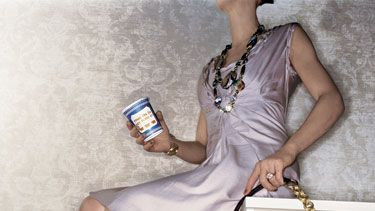Confessions of a Reluctant Shopper
One woman's journey into retail bliss. "I grew up believing shopping was supposed to be fun. It didn't quite turn out that way."

In my early 20s, when most of my friends had already come into their own styles, my top priority was losing the band-geek image that had followed me since high school. On a vacation to Montreal, I combed the racks of high-end shops for a pair of jeans that would kick-start my transformation. In the end, I was seduced by the advice of a trendier-than-thou salesgirl and flew home with ass-huggers and a backless, lace-up top. "But where do I wear it?" I asked. "Anywhere," she replied in a Quebecois accent that could make chaps sound stylish. I convinced myself that I'd become the type to wear such an ensemble. But in practice, I couldn't even make it work on Halloween.
Then there was my attempt at aspirational shopping. My grandmother had just passed away, and I felt the urge to immortalize her in designer goods. As $1200 sizzled in my pocket, I stalked the handbag selection at Chanel. It took six weeks of nose-on-glass surveillance before I found the courage to ask for sales assistance — only to learn that the month's rent I was ready to fork over would barely cover the chain-link strap on my dream bag. I put my name on the waiting list for a smaller runner-up and scurried out with my tail between my legs.
They never called.
Soon after, I concluded that for me, shopping was destined to be a necessary but joyless act. I bought hard-to-screw-up pieces in black, gray, and denim, then mixed, matched, and repeated. I shopped clearance racks for the least offensive footwear. And through it all, I suffered an acute sense of retail guilt. I tortured friends with the should-I-or-shouldn't-I-keep-it? game and returned items to remote branches of my go-to stores. Who wants to void a salesperson's commission face-to-face?
And then my fairy-tale moment arrived. Strolling down Boston's Newbury Street last summer, I spotted a 75-percent-off sign in the Marc Jacobs window. I almost kept walking, but the self-service boxes of merchandise lured me inside. And there they were: a single pair of white-patent stiletto slingbacks — just my size, under $100, deliciously over the top. I slipped them on, took three laps around the store, and threw down my Visa even though they were marked Final Sale. For a handwringer like me, it was a reckless, impulsive move. But when I walked back out onto Newbury, M.J. shopping bag swinging on my arm, I felt a rush. Shopping was indeed fun.
Get exclusive access to fashion and beauty trends, hot-off-the-press celebrity news, and more.